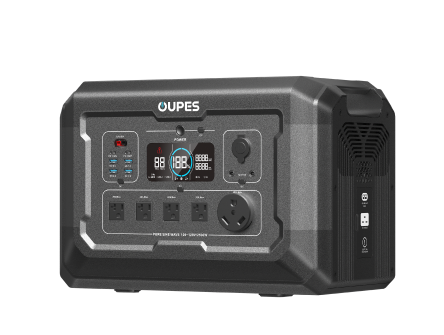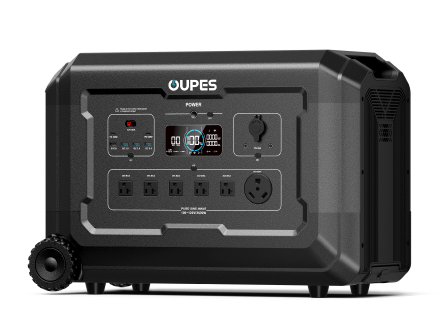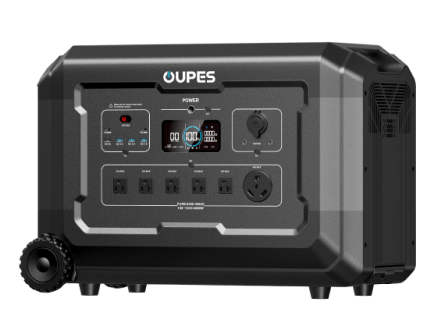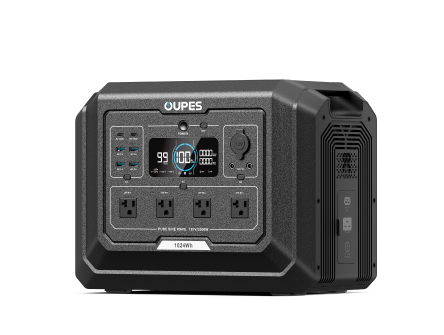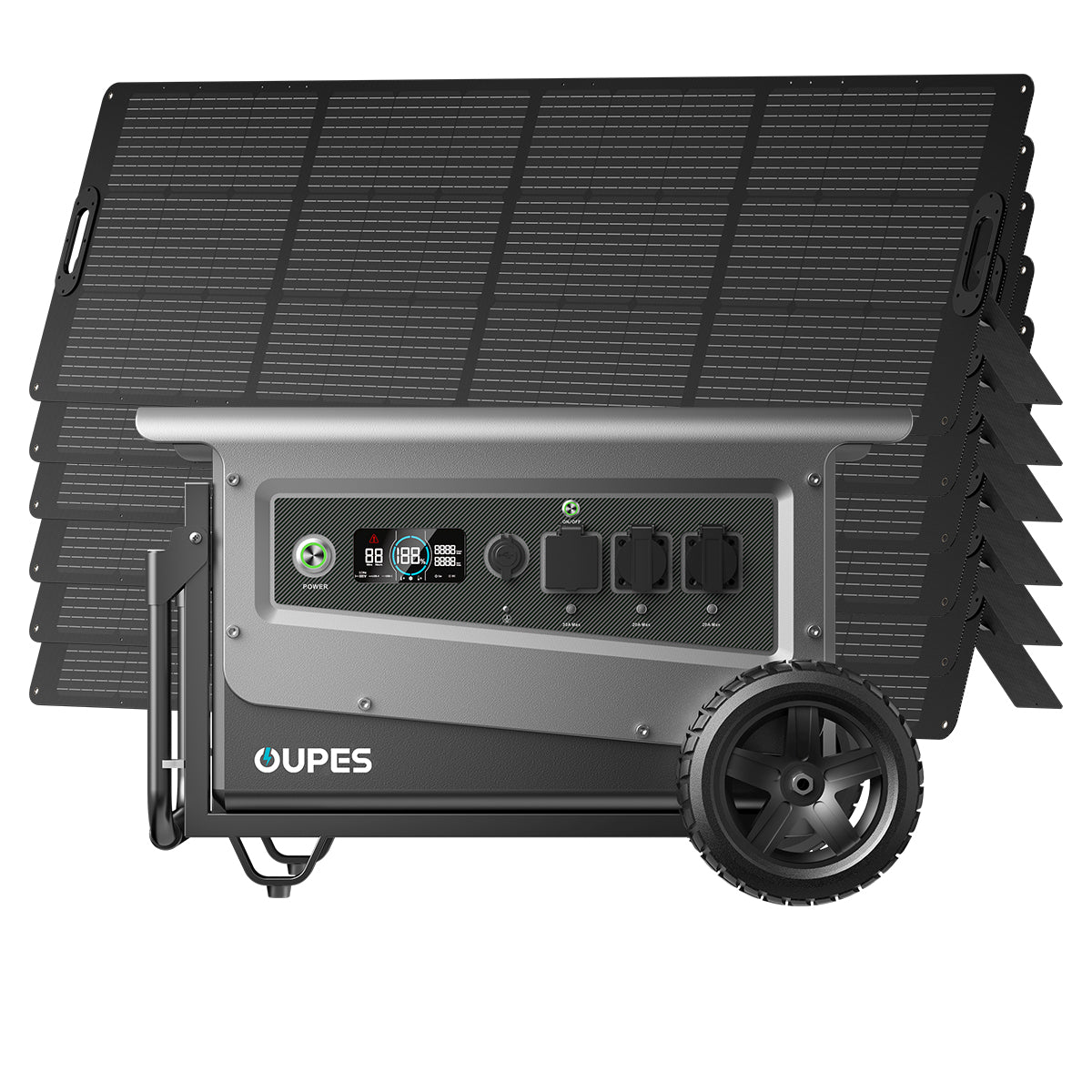
When the lights go out and the world outside is being battered by wind, rain, or snow, there’s one device that can quietly become your hero: a portable power station. As power outages become more frequent due to hurricanes, wildfires, and extreme weather, having a reliable backup power source isn't just smart—it's essential. But how exactly should you use one to get the most benefit during an emergency?
In this guide, we’ll take you through everything you need to know to use a portable power station during a power outage. From setting it up and choosing the right devices to power, to understanding how to charge it with solar panels like those from OUPES, this article will empower you to keep your home running even when the grid goes dark.
Understanding the Capabilities of a Portable Power Station
Before you can use a portable power station effectively, it’s crucial to understand what it can and cannot do. These devices vary widely in terms of capacity, power output, and features. The right model for you depends on your power needs during an outage.
Most portable power stations, like those from OUPES, provide several AC outlets, DC outputs, and USB ports. They range in capacity from 500Wh to over 3,000Wh or more. The higher the watt-hour (Wh) rating, the longer the power station can run your appliances. For example, a 3,000Wh station can power a full-sized refrigerator for up to 24 hours or run medical equipment like CPAP machines overnight.
You should also consider the surge power rating, which determines if it can handle devices that need a burst of power when starting—like a microwave or a sump pump. Knowing this in advance helps you avoid overloading the unit or damaging your devices.
Another key factor is the type of battery. Lithium iron phosphate (LiFePO4) batteries, commonly used in premium models like OUPES, offer longer life cycles and better temperature tolerance—both essential in emergency situations. Some power stations also support solar charging, enabling you to generate your own electricity off-grid when the outage extends for days.
How to Set Up and Use Your Power Station During an Outage
Once the power goes out, you’ll want to act quickly. But safety and efficiency come first. The best time to prepare is before the outage even begins.
Place your portable power station in a well-ventilated, dry, and accessible area. If you’re using solar panels, ensure they’re already placed where they can receive optimal sunlight. For units like the OUPES Mega series, setup is simple—just plug in the necessary devices and you’re good to go.
Start by identifying your essential electronics. These may include medical equipment, lights, a mini fridge, phone chargers, or even a router to keep your internet running. Avoid plugging in unnecessary high-wattage appliances like electric heaters or ovens, which can quickly drain the battery.
Use extension cords or power strips to manage multiple devices, but ensure you don’t overload any single outlet. Most stations have a built-in display showing real-time input/output and remaining battery life, which helps you manage consumption wisely. Some models also include app support for remote monitoring, though this requires a working internet connection or Bluetooth range.
Always turn off the power station when not in use to conserve energy. If you’re rotating devices—say, charging your laptop now and your fan later—shut down the unused ports to save power.
Keeping Your Food Cold and Essentials Powered
Food spoilage is one of the most immediate concerns during a power outage. A portable power station can extend the safe window for refrigerated items, helping prevent waste and health risks.
Refrigerators and freezers use a moderate amount of power, typically 100-300W when running, with occasional surges. A high-capacity power station like an OUPES 3kWh unit can keep a fridge running for over 20 hours on a full charge. To optimize efficiency, avoid opening the fridge door frequently and use insulated covers if available.
Pairing the power station with solar panels can make a huge difference. During daylight, solar charging can replenish the energy used overnight, giving you a renewable cycle that extends usage indefinitely—especially in sunny climates. This is particularly useful in multi-day outages caused by hurricanes or winter storms.
Aside from your fridge, be sure to prioritize other essentials. Keep your phone and communication devices charged, power a fan or heater if needed, and ensure you can see clearly at night. LED lights consume very little power, so they’re ideal for staying illuminated without draining your station too quickly.
Recharging Your Portable Power Station with Solar Panels
One of the biggest advantages of modern power stations is solar charging. When the grid is down and fuel for gas generators is hard to come by, the sun becomes your most reliable energy source.
Start by connecting your solar panels to the input port on your power station. Make sure the panels are angled correctly to maximize sunlight exposure. During peak hours (usually from 10 a.m. to 3 p.m.), solar panels are most effective. With high-quality 240W foldable panels from OUPES, you can harvest a significant amount of power per hour.
Keep in mind that weather, shading, and panel quality affect charging speed. A full charge may take anywhere from 4 to 12 hours, depending on the station’s capacity and the wattage of your panels. In intermittent sun, it’s best to charge incrementally throughout the day to avoid completely draining the battery overnight.
Also, consider using multiple panels if your power station supports parallel charging. This will dramatically reduce the time needed to top off your battery. Some users keep a dedicated setup for solar input during emergency seasons like hurricane months, allowing fast deployment when needed.
Solar charging not only ensures sustainability but also offers peace of mind when outages stretch longer than expected. Combined with energy-saving habits, it allows your power station to operate as a true off-grid solution.
Maintenance Tips and Best Practices for Emergency Readiness
Using a power station effectively during an outage is only possible if the device is well maintained and ready to go. Regular upkeep ensures it performs reliably when you need it most.
Check the battery charge monthly and top it up if it drops below 50%. Most modern power stations can sit idle for months without significant loss, but it’s still smart to test them before storm seasons begin. Fully charging and discharging the battery every few months can help extend its lifespan.
Store the power station in a cool, dry place to avoid battery degradation. If you live in an area prone to hurricanes or wildfires, consider a fire-resistant storage case for added protection. Keep the charging cables, solar connectors, and instruction manual nearby in a designated emergency kit.
Label your essential devices and know their wattage ahead of time. This way, you can quickly make decisions during an outage about what to plug in and what to leave off. It’s also a good idea to create a written checklist or diagram of your setup—especially if multiple family members will be using it.
Finally, test your setup periodically. Simulate a short outage by unplugging from the grid and running only on your portable power station. This practice run will highlight any issues and build confidence for real emergencies.
With a reliable unit like OUPES and good preparation, you’ll be well-positioned to handle any power disruption safely and efficiently.
In summary, portable power stations are one of the most practical and sustainable tools for emergency readiness. Whether you're keeping your fridge cold, charging your phone, or powering essential medical devices, knowing how to properly use and maintain your station can make all the difference when the grid goes down.
By understanding your unit’s capabilities, following smart energy practices, and integrating solar charging, you can ensure your household remains resilient no matter how long the outage lasts. Invest in quality, stay informed, and let tools like OUPES help you weather the storm.

